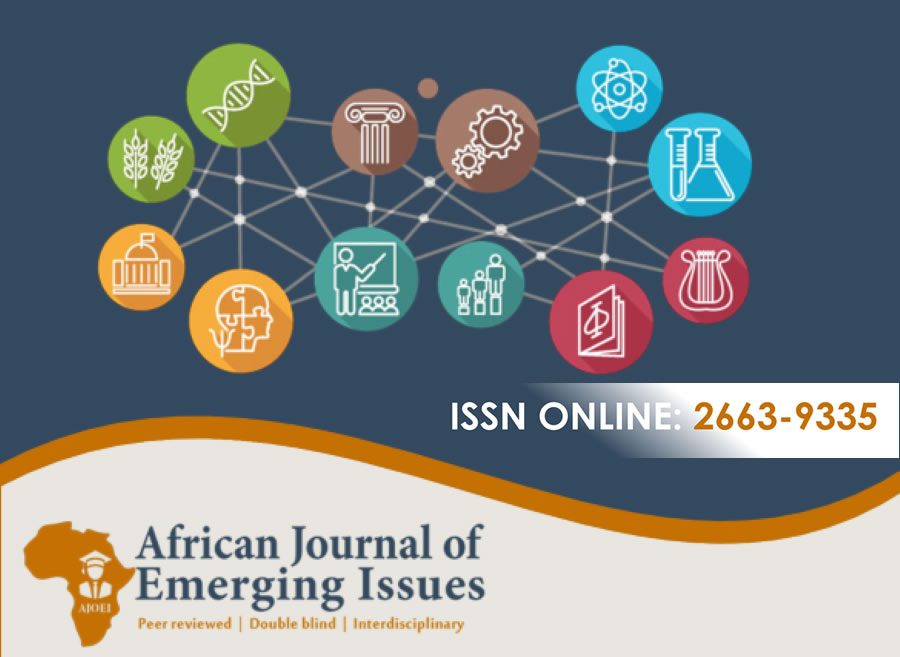PROJECT PLANNING AND PERFORMANCE OF THE NATIONAL AGRICULTURAL AND RURAL INCLUSIVE GROWTH PROGRAM IN KENYA
Abstract
The study assessed the influence of project planning on the performance of the National Agricultural and Rural Inclusive Growth Program in Kenya. The study adopted an explanatory research design targeting a population of 229 respondents comprising project managers, project sponsors, and community members. The study used Stratified sampling; the study utilized structured and semi-structured questionnaires to collect data. The questionnaires were distributed via google forms to collect data for the research and to enhance the questionnaire's validity and reliability; a pilot study was carried out in Kiminini sub-county. Quantitative data were coded and entered into the Statistical Package for Social Scientists (SPSS, Version 27.0) and analyzed using descriptive statistics. Regression analysis was done to test the level of significance between one variable, confidence level and predictions. The findings showed that project planning significantly affect the performance of NARIGP. Therefore, the study concludes that project planning is key management practices that enhance the performance of NARIGP. The study recommends enhancing collaboration with stakeholders to identify and leverage additional resources is essential.
Keywords: Project Planning, Project Performance, NARIG
References
Al-Hajj, A., and Zraunig, M. (2018). The impact of project management implementation on the successful completion of projects in construction. International Journal of Innovation, Management, and Technology, 9(1), 21-27.
Blackstone, J. (2010). Theory of constraints. Scholarpedia, 5(5), 10451.
Campbell, J. L., Dhaliwal, D. S., & Schwartz Jr, W. C. (2012). Financing constraints and the cost of capital: Evidence from the funding of corporate pension plans. The Review of Financial Studies, 25(3), 868-912.
Chesiyna, P. K., & Wanyoike, D. A. N. I. E. L. (2016). Determinants of effective implementation of constituency development fund projects in Baringo central constituency, Kenya. International journal of research in Business Management, 4(4), 31-42.
Githenya, M. S., & Ngugi, K. (2014). Assessment of the determinants of implementation of housing projects in Kenya. European journal of business management, 1(11), 230-253.
Goldratt, E. M. (1990). Theory of constraints (pp. 1-159). Croton-on-Hudson: North River.
Hashakimama, T. (2022). Influence of Family Social Economic Parameters on Internal Efficiency of Public Primary Schools in Western Province of Rwanda (Doctoral dissertation, University of Nairobi).
Izmailov, A., Korneva, D., and Kozhemiakin, A. (2016). Effective project management with theory of constraints. Procedia-Social and Behavioral Sciences, 229, 96-103.
Johnston, R. B., & Brennan, M. (1996). Planning or organizing: the implications of theories of activity for management of operations. Omega, 24(4), 367-384.
Kothari, C.R (2011). Research Methodology. Methods and Techniques. New Delhi: New Age International Publishers. (2nd Edition).
Minyiri, A. C., and Muchelule, Y. (2018). Influence of Monitoring and Evaluation on Water Project Performance in Migori County, Kenya. Africa International Journal of Multidisciplinary Research, 2(6), 1-18.
Muute, N. C., and James, R. (2019). Project planning practices and performance of construction projects in Nairobi City County, Kenya. Unpublished Masters Dissertation), Kenyatta University, Kenya.
Mwanza, J. B., Nsenduluka, E., & Shumba, O. (2024). Indigenous Knowledge Use and its Constraints in Drought Resilience Building: A Case of Rural Gwembe-Zambia. Open Journal of Social Sciences, 12(1), 339-359.
Nyoro, J. K. (2019). Agriculture and rural growth in Kenya. Tegemeo Institute.
Oluoch, J. O. (2020). Monitoring And Evaluation System, Stakeholder Participation, Organizational Structure And Provision Of Curative And Preventive Tuberculosis Health Care Services In Public Health Institutions In Kisumu County, Kenya (Doctoral dissertation, University of Nairobi).
Picco, L., Middleton, M., Bruno, R., Kowalski, M., & Nielsen, S. (2020). Validity and reliability of the computer-administered Routine Opioid Outcome Monitoring (ROOM) tool. Pain Medicine, 21(12), 3645-3654.
PMBOK 6th Edition, P. S. (2018). A guide to the project management body of knowledge. Project Management Institute. Pensylvania.
Pokuaaaddo-Parker, Rosemary and Arthur, George and Ansaadarko, Josephine and Asuoafram, Vincent and Essel, Frederick and AgyemangOpoku, Oscar. (2021). Assessing the Relationship between Project Planning Effort and Project Success in the Construction Industry of Ghana. International Journal of Contemporary Management. 2. 373-386.
Polit, D. F., & Beck, C. T. (2014). Study guide for essentials of nursing research: appraising evidence for nursing practice. Lippincott Williams & Wilkins.
Rachid, Z., Toufik, B., & Mohammed, B. (2018). Causes of schedule delays in construction projects in Algeria. International Journal of Construction Management, 19(5), 371-381.





